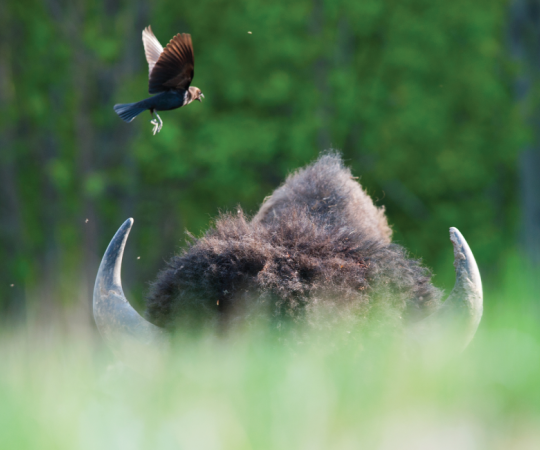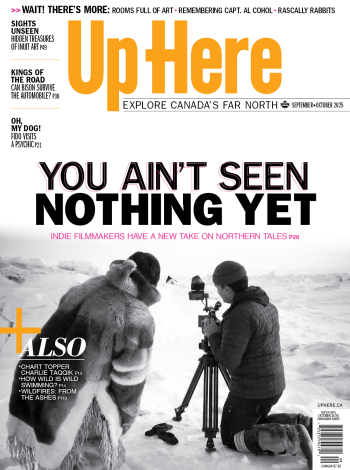In its younger days, an encounter with a human would have been rare. Perhaps it curiously followed Inuit paddling an umiaq through the fog off the coast of Baffin Island. Or it cautiously crossed the path of a large wooden whaling ship, with a rambunctious Danish or Scottish crew crowding the decks. As it grew into adulthood over centuries, it surely noticed gradual increases in the number and size of fishing vessels in Arctic waters by the roar of their diesel-powered engines. Still, this Greenland shark, like so many others slowly stalking the deep, dark seas, keeps to itself and remains a mystery to humans to this day.
We know very little when it comes to the Arctic’s largest fish, says Brynn Devine, a deep-sea fish ecologist and PhD candidate at Memorial University in Newfoundland, who has studied the Greenland shark for the last three years. It’s a hunter and scavenger, but we can’t say how it attacks its prey or how often it eats. It lives in cold Arctic and North Atlantic waters, but its migratory patterns, full range and population size are hazy. Females reach sexual maturity at roughly 130 years of age, but their litter size, breeding and pupping grounds are largely a secret. And it grows very slowly—roughly one centimetre per year—with a centuries-long lifespan, but scientists don’t know how or why that is.
Its impressive lifespan was confirmed in a 2016 study by Danish scientists who carbon-dated eye lenses from 28 sharks caught accidentally by commercial fishing operations. The largest shark of the bunch was found to be at least 272 years of age—and possibly more than 500 years old. “The mechanisms driving extreme longevity are not well understood,” Devine says, though the shark’s slow metabolism due its cold-water habitat is likely part of the explanation.
In a rapidly changing North, there is something comforting about the thought of a shark alive today in the Arctic that predates the creation of Canada and perhaps even the Hudson’s Bay Company. It can give us a sense of life’s permanency on this planet to know it’s possible that a shark born before Shakespeare has weathered centuries of change and survives to this day. Yet, since there’s so much we don’t know about the Greenland shark, we have no idea if the species is in peril.
Devine is one of the scientists trying to shed light on the creature that has for so long lived in darkness. Last year, she and a colleague placed cameras baited with squid at 31 locations in the Arctic—many near the communities of Resolute, Grise Fiord and Arctic Bay in Nunavut. The cameras captured 142 different sharks, providing valuable information on the size and sex distribution of individuals at the sites. “It was nice to see them in a natural state,” she says.
Unfortunately, most human interaction with the Greenland shark occurs when it’s pulled from fishing nets as by-catch. (The shark doesn’t have a commercial market. Its flesh can be poisonous to humans.) This is how much of its population data has been gleaned.
Devine says roughly 105 tons of Greenland shark are caught accidentally each year in Northern Canada and 1,000 tons globally. (She did not know what that translated to in actual shark numbers.) Due to its slow growth rate, late sexual maturation and unanswered questions about its population and range, Greenland sharks may be very sensitive to over-fishing, says Devine.
As scientists learn more about the shark’s feeding and reproductive habits, its position in the marine ecosystem and its relationship to changing variables like sea ice, we’ll better understand how we can help ensure a Greenland shark born today lives long into this new millennium.









